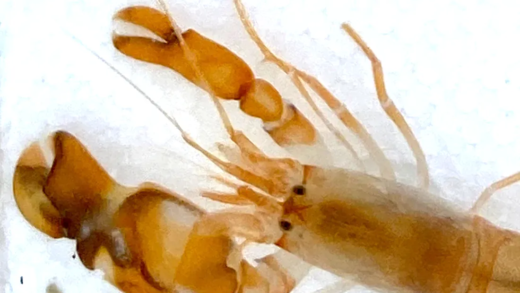Bryozoans are unique aquatic organisms with a brain-like appearance, thriving in Canadian lagoons and playing an essential ecological role. They reproduce both sexually and asexually, contributing to their rapid growth. These lagoons also host other unusual marine life, showcasing rich biodiversity. Scientists employ various methods to study bryozoans, highlighting their importance in environmental monitoring.
What are Bryozoans?
Bryozoans are fascinating aquatic creatures, often referred to as “moss animals”. They belong to the phylum Bryozoa and are primarily found in marine and freshwater environments. Characteristically, bryozoans are small, colonial organisms that can range from a few millimeters to several centimeters in size. They form intricate structures resembling coral reefs, composed of numerous tiny individuals called zooids. Each zooid has specialized functions, contributing to the colony’s survival and growth.
These organisms have a unique feeding mechanism using a lophophore, a crown of tentacles lined with cilia that helps capture food particles from the water. Bryozoans play a vital ecological role by filtering water and providing habitat for various marine species. Their colonial nature allows them to adapt to changing environments effectively.
Why do Bryozoans Resemble a Brain?
Some bryozoans exhibit a striking resemblance to a brain due to their intricate, convoluted structures. This brain-like appearance is particularly evident in certain species that develop large, fleshy colonies. The folds and grooves of these bryozoans can remind observers of the complex folds found in mammalian brains.
This resemblance is not just a visual coincidence; it reflects the complexity of their organization. The zooids within a bryozoan colony communicate and function collectively, much like neurons in a brain. This unique structure allows them to coordinate activities such as feeding and reproduction efficiently. Understanding this brain-like quality provides insight into the evolutionary adaptations of bryozoans.
How Did This Brain-shaped Blob End Up in a Canadian Lagoon?
Bryozoans thrive in various habitats, including the calm waters of Canadian lagoons. These environments provide the necessary conditions for their growth, such as stable temperatures and abundant food sources. The presence of bryozoans in these lagoons indicates a healthy ecosystem, as they are sensitive to environmental changes.
In Canada, bryozoans can be found attached to rocks, submerged vegetation, and other hard substrates within lagoons. Their ability to form colonies allows them to occupy space efficiently, creating habitats for other marine organisms. The distribution of bryozoans in Canadian lagoons illustrates their adaptability and ecological significance.
The Ecological Role of Bryozoans
Bryozoans play a crucial role in their ecosystems, acting as natural water filters. They contribute to the ecological balance by removing particulates and excess nutrients from the water, which helps maintain water clarity and quality. This filtering action is vital for the health of aquatic environments, as it supports other marine life by ensuring a cleaner habitat.
Additionally, bryozoans provide habitat for various marine organisms. Their complex structures create microhabitats for small fish, invertebrates, and algae. These colonies can enhance biodiversity, allowing different species to thrive in close proximity. Bryozoans also serve as a food source for some animals, further embedding them into the food web.
Overall, the presence of bryozoans indicates a healthy ecosystem. They are sensitive to pollution and environmental changes, making them important bioindicators for scientists monitoring aquatic health.
Are Bryozoans Common in Other Parts of the World?
Bryozoans are not exclusive to Canada; they can be found in diverse aquatic environments worldwide. These organisms inhabit both marine and freshwater ecosystems, from tropical reefs to cold polar waters. Their adaptability allows them to thrive in various conditions, including tidal zones, lakes, and rivers.
Globally, there are over 4,500 described species of bryozoans, showcasing their widespread presence. Some species are abundant in certain areas, while others may be rare. For example, the marine bryozoan Bugula neritina is commonly found in warm coastal waters, whereas others prefer cooler, deeper environments.
This global distribution highlights the ecological significance of bryozoans and their ability to adapt to different habitats. Their presence in various ecosystems reinforces their role as vital components of biodiversity.
What Can We Learn from Studying Bryozoans?
Studying bryozoans offers valuable insights into marine biology and ecology. Researchers focus on their unique characteristics, reproduction, and growth patterns to understand evolutionary adaptations. Bryozoans are also used in environmental monitoring, helping scientists assess the health of aquatic systems.
Moreover, bryozoans have potential applications in biotechnology and medicine. Some species produce chemical compounds that may have pharmaceutical properties, providing avenues for drug discovery.
In summary, bryozoans are not just intriguing creatures; they are essential to understanding aquatic ecosystems and can lead to significant scientific advancements. Their study enriches our knowledge of marine life and offers practical benefits that extend beyond academia.
How Do Bryozoans Reproduce and Grow?
Bryozoans reproduce both sexually and asexually, showcasing their adaptability in various environments. Asexual reproduction occurs through budding, where new zooids develop from the existing colony. This method allows bryozoans to expand rapidly, forming extensive colonies that can cover large areas. Sexual reproduction involves the production of eggs and sperm, typically released into the water. Fertilization occurs externally, leading to the formation of larvae that eventually settle and develop into new colonies.
The growth of bryozoans is influenced by environmental conditions, including temperature and food availability. Under optimal conditions, bryozoans can grow significantly, sometimes doubling their colony size within weeks. This growth strategy ensures their survival and ecological role in filtering water and providing habitat for other marine organisms.
What Other Unusual Creatures Can Be Found in Canadian Lagoons?
Canadian lagoons are home to a diverse array of unusual marine life alongside bryozoans. Notable creatures include:
- Sea Cucumbers: These soft-bodied echinoderms play a vital role in nutrient recycling on the ocean floor.
- Jellyfish: Various species inhabit lagoons, contributing to the food web and influencing local ecosystems.
- Starfish: Known for their regenerative abilities, starfish are essential predators in marine environments.
- Seagrasses: While not animals, these plants create essential habitats for fish and invertebrates.
These organisms, like bryozoans, contribute to the biodiversity of Canadian lagoons, illustrating the complex interdependence within aquatic ecosystems.
How Do Scientists Study Bryozoans and Their Habitats?
Research on bryozoans involves various scientific methods aimed at understanding their biology and ecological impact. Scientists often conduct field studies, collecting samples from different habitats to analyze bryozoan diversity and distribution. Laboratory experiments help in observing their growth patterns and reproductive strategies.
Advanced techniques, such as molecular analysis, allow researchers to explore genetic relationships among species, shedding light on their evolutionary history. Additionally, bryozoans are monitored as bioindicators of environmental health, helping scientists assess the impacts of pollution and climate change on aquatic ecosystems.





Comments are closed.